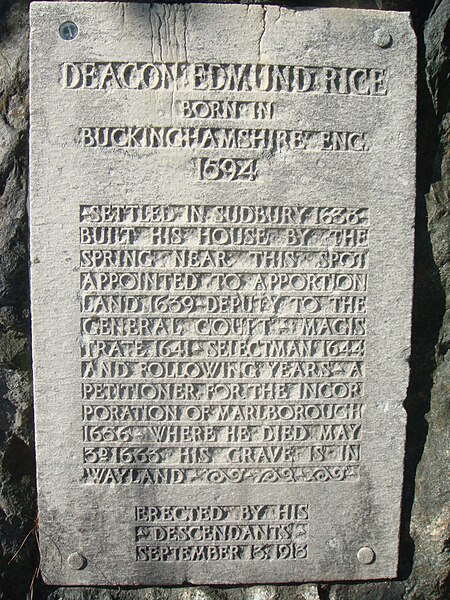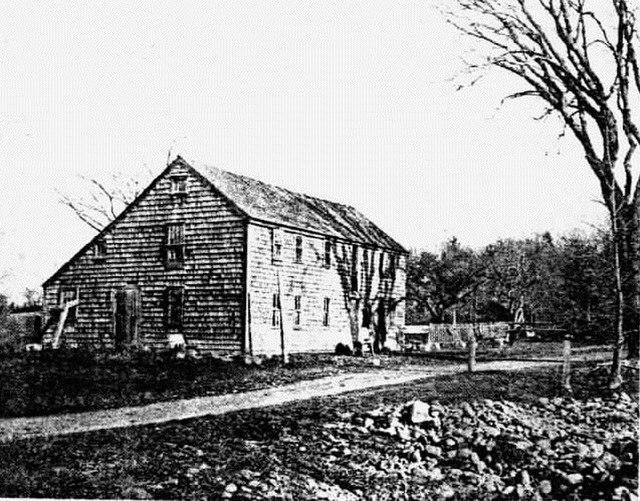Edmund Rice, was an early settler to Massachusetts Bay Colony born in Suffolk, England. He lived in Stanstead, Suffolk and Berkhamsted, Hertfordshire before sailing with his family to America. He landed in the Colony in summer or fall of 1638, thought to be first living in the town of Watertown, Massachusetts. Shortly thereafter he was a founder of Sudbury in 1638, and later in life was one of the thirteen petitioners for the founding of Marlborough in 1656. He was a deacon in the Puritan Church, and served in town politics as a selectman and judge. He also served five years as a member of the Great and General Court, the combined colonial legislature and judicial court of Massachusetts.
Edmund Rice homesite marker tablet in Wayland, Massachusetts.
Edmund Rice Homestead built about 1643 by Rice in saltbox style by the spring feeding the Sudbury River near the Old Connecticut Path in southeastern Sudbury (now Wayland). It stayed in the Rice family many generations until it burned down sometime around 1910. The house was located at 42°20′42″N 71°22′00″W / 42.344897°N 71.3666763°W / 42.344897; -71.3666763 off present-day Charena Rd. in Wayland.
Signature of Edmund Rice on a 1659 land survey record of his estate purchase of the "Dunster Farm" property near Old Connecticut Path in old Sudbury. Original in Harvard University Archives, Cambridge.
The Edmund Rice Memorial designed by Arthur Wallace Rice was erected 29 August 1914 by Edmund's descendants at the Old North Cemetery, site of the First Sudbury Meetinghouse in Wayland, Massachusetts. (42°22′15″N 71°22′09″W / 42.370943°N 71.369046°W / 42.370943; -71.369046)
Stanstead is a village and civil parish in Suffolk, England. The name Stanstead comes from the Old English for "Stony place". Located off the B1066, it is around 4 miles (6 km) from Sudbury, and is part of Babergh district. It is about 2 kilometres (1 mi) from Glemsford, 12 miles (19 km) from Hadleigh, and 4 miles (6 km) from Lavenham.
Village sign, Stanstead, Suffolk





